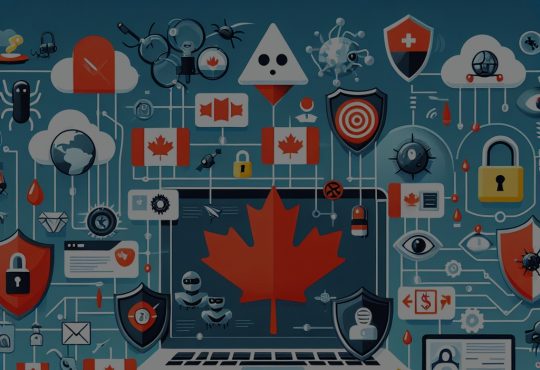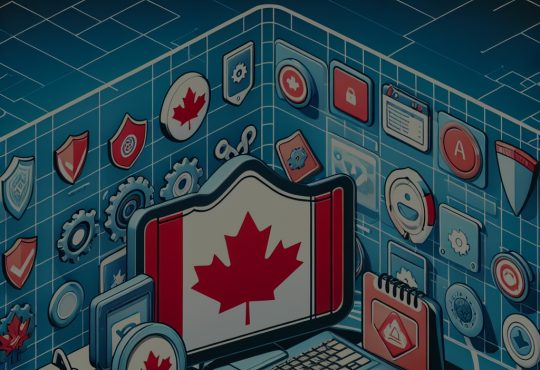
Public Wi-Fi networks have become an integral part of urban life in Canada, offering convenient connectivity in cafes, libraries, airports, and public parks. While these networks provide significant benefits, they also come with inherent risks and vulnerabilities that can compromise user safety. Understanding these risks and adopting best practices for secure use is essential for Canadians who frequently rely on public Wi-Fi. Additionally, government initiatives aimed at enhancing public Wi-Fi safety play a crucial role in fostering a secure digital environment for all users.
Understanding Public Wi-Fi: Risks and Vulnerabilities in Canada
Public Wi-Fi networks are often unsecured, making them attractive targets for cybercriminals. These networks typically lack the encryption protocols found in private networks, which increases the risk of data interception. Hackers can easily monitor network traffic, capturing sensitive information such as login credentials, emails, and credit card numbers. This vulnerability is further exacerbated by the fact that many users fail to take proper precautions when connecting to public Wi-Fi, increasing the likelihood of a security breach.
In Canada, the prevalence of cybercrime has raised alarms about the safety of public Wi-Fi. Reports indicate a rise in ransomware attacks and phishing schemes that exploit unsecured networks. Cybercriminals often employ tactics like "man-in-the-middle" attacks, where they position themselves between the user and the network, allowing them to intercept data without the user’s knowledge. The anonymity of public spaces makes it easier for these criminals to operate undetected, posing a significant risk to unsuspecting network users.
Another vulnerability arises from the proliferation of poorly secured IoT devices that connect to public Wi-Fi. Many Canadians own smart devices such as cameras, thermostats, and home assistants that may automatically connect to available networks. These devices often have inadequate security measures, making them easy targets for hackers. Consequently, an unsecured public Wi-Fi network can become a gateway for cybercriminals to access not just individual devices but entire smart home ecosystems.
Public Wi-Fi networks can also be susceptible to rogue hotspots, where cybercriminals set up fake networks with names similar to legitimate ones. Unsuspecting users may connect to these rogue hotspots, mistakenly believing they are accessing a secure network. Once connected, the attackers can monitor and manipulate the user’s data. Awareness of this risk is crucial for Canadians who frequently utilize public Wi-Fi, as it can often be the first line of defense against cyber threats.
Best Practices for Secure Use of Public Wi-Fi Networks
To mitigate the risks associated with public Wi-Fi, users should adopt several best practices. First and foremost, individuals should avoid accessing sensitive information, such as banking or personal accounts, while connected to public networks. If necessary, users should consider using a Virtual Private Network (VPN) to encrypt their internet traffic, providing an additional layer of security that can protect against data breaches and unauthorized access.
Another essential practice is to ensure secure connections by verifying the legitimacy of the Wi-Fi network before connecting. Users should always confirm the network name with staff or official signage if they are in a public space like a café or airport. Additionally, disabling file sharing and ensuring that network sharing settings are turned off can help reduce the risk of unauthorized access to personal devices while connected to public networks.
Keeping devices updated is also crucial for ensuring security. Software developers frequently release updates that patch vulnerabilities and enhance security features. Users should enable automatic updates for their operating systems and applications to minimize the risk of exploitation through outdated software. Regularly changing passwords and using two-factor authentication can further bolster security on public networks.
Finally, users should be cautious about what information they share over public Wi-Fi. This includes avoiding personal information in emails or messages and being wary of entering personal details on websites that do not utilize HTTPS encryption. By remaining vigilant and adopting these best practices, Canadians can significantly reduce their risk when using public Wi-Fi networks.
Government Initiatives to Enhance Public Wi-Fi Safety in Canada
Recognizing the importance of public Wi-Fi safety, the Canadian government has initiated various programs and guidelines aimed at enhancing cybersecurity education and infrastructure. One notable initiative is the Canadian Cyber Security Strategy, which aims to strengthen the country’s cybersecurity posture across public and private sectors. This strategy includes encouraging best practices for public Wi-Fi usage through public awareness campaigns and collaborations with industry stakeholders.
The government has partnered with organizations such as the Canadian Centre for Cyber Security (CCCS) to provide resources and guidelines for safe internet practices. These resources include educational materials on identifying secure networks and understanding potential threats associated with public Wi-Fi. By disseminating this information, the government hopes to empower Canadians to make informed decisions when accessing public networks.
Furthermore, municipalities across Canada have started implementing secure public Wi-Fi networks with enhanced security protocols. These initiatives often involve encrypting network traffic and encouraging users to authenticate before connecting. By providing safer public Wi-Fi options, cities can reduce the risk of cybercrime and enhance the overall experience for residents and visitors alike.
Finally, the government encourages the private sector to take an active role in improving public Wi-Fi safety. This includes implementing robust cybersecurity measures and promoting the development of technologies that enhance user privacy and data protection. By fostering collaboration between the government and private enterprises, Canada aims to create a safer digital environment that protects citizens while they utilize public Wi-Fi networks.
As public Wi-Fi networks continue to proliferate across Canada, understanding the associated risks and vulnerabilities becomes increasingly vital. By adopting best practices for secure use, Canadians can protect their personal information and mitigate potential threats. Moreover, government initiatives play a pivotal role in enhancing public Wi-Fi safety, ensuring that users have access to secure networks and educational resources. Ultimately, a collective effort among individuals, organizations, and government entities is essential to create a safer and more secure digital landscape for all Canadians.






